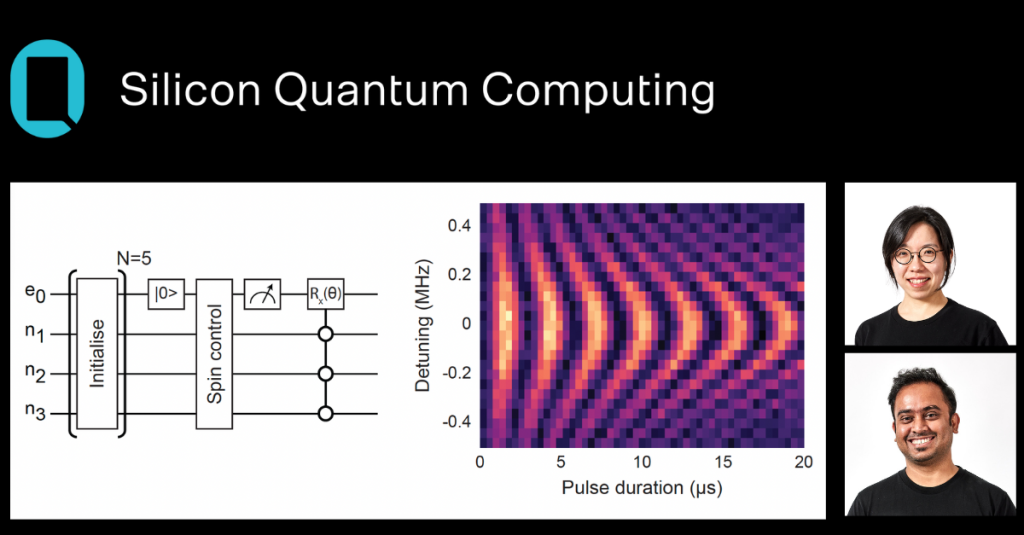Silicon Quantum Computing demonstrates high-fidelity initialisation of nuclear spins in a 4-qubit device
Sydney, Australia, 7 Feb 2024 – SQC has achieved a significant milestone.
Using our atomic-scale manufacturing capabilities, our scientists have fabricated a four-qubit quantum device known as a qubit register.

The SQC team has successfully demonstrated ultra-fine control of this register. We have demonstrated that three nuclear spins and one electron spin spaced only a few nanometres apart can be initialised to their lowest energy state.
We have then demonstrated simultaneous multi-controlled SWAP gates, whereby electron and nuclear spins are orchestrated to swap their states.
Electron spin qubit operations were undertaken with extremely high fidelity (99.78% ± 0.07%). Being well above the fault-tolerant threshold for the surface code, these qubit registers are sufficiently high-quality for SQC to now scale its devices.
“This is another superb result. It is a testament to the calibre of our physicists and engineers. It is also a vital milestone as we seek to scale our atom-based quantum computer,” said Michelle Simmons, CEO.
“When we founded SQC, we knew that we needed two results before we could contemplate rapid scaling of our system. First, we needed to demonstrate two-qubit logic between separate registers. We achieved this result in 2019 and published the finding in Nature.”
“Second, we also needed to demonstrate ultra-fine control over the spin states of the qubits that comprise its registers. That is what we have now reported here, in Nature Nanotechnology.”
“With a proven ability to control both the electron and nuclear spins in a multi-qubit register at high fidelities, SQC now has the necessary components to start to scale its qubit count. This is extremely exciting,” she said.
The company’s next goal is demonstration of small-scale algorithms in its atomically manufactured system.
Read the full paper here – High-fidelity initialisation and control of electron and nuclear spins in a four-qubit register.
Authors: J. Reiner, Y. Chung, S. H. Misha, C. Lehner, C. Moehle, D. Poulos, S. Monir, K. J. Charde, P. Macha, L. Kranz,I. Thorvaldson,1, 2 B. Thorgrimsson, D. Keith, Y. L. Hsueh, R. Rahman, S. K. Gorman, J. G. Keizer, and M. Y. Simmons.
